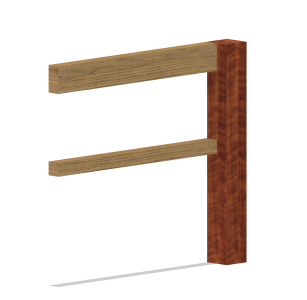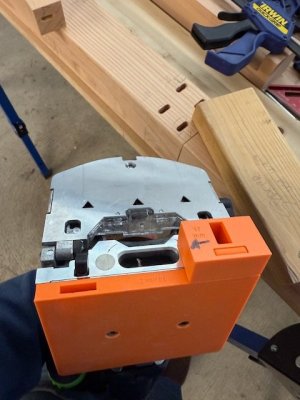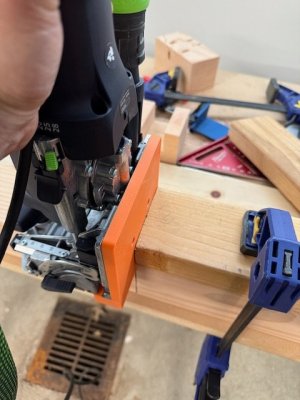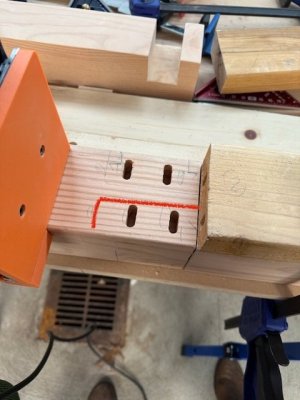I am adding side supports (1.5"x1.5" and 1.5" x 3") to a 3"x3" leg. See first photo.
How would I use the domino to joint these? (8mm dominos). I have 3d-printed my own jig to get them centered, but I'm wondering if there is an easier way.
I want 1 horizontal domino in the small support and 2 horizontal ones spaced out for the 3" one.
Thanks in advance.
-Ross
PS I've included my setup, but it's quite elaborate and I'm wondering if there is an easier and faster way. My jig adds 10mm to the base and has a 17mm spacer on the side so that the domino center is 20mm from the edge (about center of 1.5") instead of 37mm, which is way too far. And the vertical cuts seem to wander and make bad mortises, if I'm not very careful and well-clamped. For the 3" piece, I do one cut with just my orange spacer, and another with an additional 2x4 (for 1.5" extra spacing).
How would I use the domino to joint these? (8mm dominos). I have 3d-printed my own jig to get them centered, but I'm wondering if there is an easier way.
I want 1 horizontal domino in the small support and 2 horizontal ones spaced out for the 3" one.
Thanks in advance.
-Ross
PS I've included my setup, but it's quite elaborate and I'm wondering if there is an easier and faster way. My jig adds 10mm to the base and has a 17mm spacer on the side so that the domino center is 20mm from the edge (about center of 1.5") instead of 37mm, which is way too far. And the vertical cuts seem to wander and make bad mortises, if I'm not very careful and well-clamped. For the 3" piece, I do one cut with just my orange spacer, and another with an additional 2x4 (for 1.5" extra spacing).






